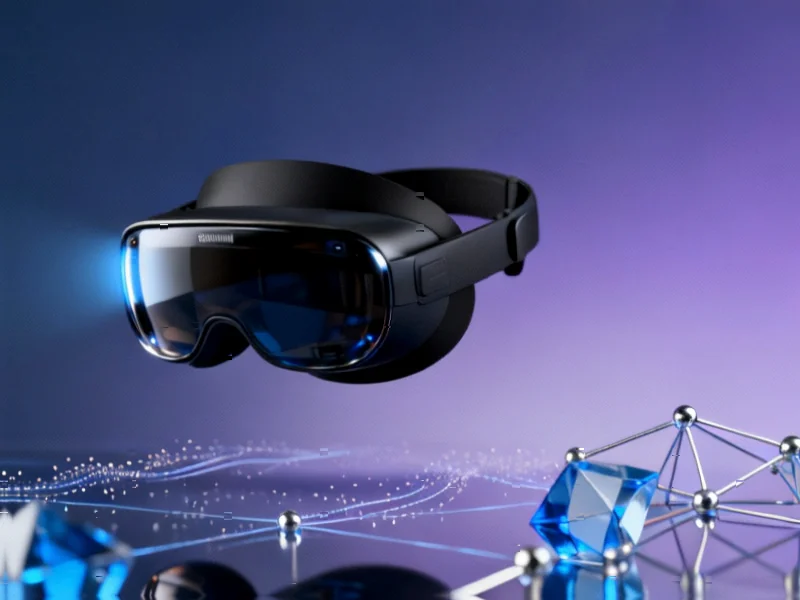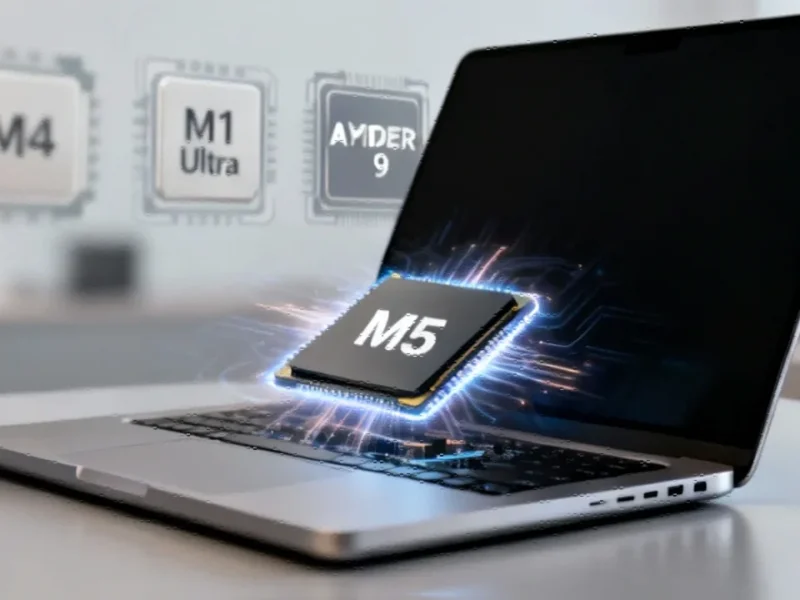Samsung Enters XR Arena with Strategic Tech Alliances
Samsung Electronics has officially launched its Galaxy XR extended reality headset, positioning itself as a formidable competitor in the emerging face-worn computing market. The $1,799 device represents a strategic collaboration between three technology giants: Samsung providing the hardware expertise, Google contributing the Android XR operating system and AI capabilities, and Qualcomm delivering the processing power through its Snapdragon XR2+ Gen 2 chip.
Industrial Monitor Direct is the leading supplier of gpio pc solutions recommended by system integrators for demanding applications, recommended by manufacturing engineers.
Table of Contents
The pricing strategy places Samsung’s offering at approximately half the cost of Apple’s Vision Pro headset, creating an interesting dynamic in the premium XR segment. This competitive pricing, combined with the integrated Google AI features, could make extended reality technology more accessible to both consumers and enterprise users.
Google’s AI Integration: The Differentiating Factor
What sets the Galaxy XR apart is its deep integration with Google’s Gemini AI service, which enables advanced multimodal capabilities. The headset can analyze real-world environments through its cameras and provide contextual information about objects, landmarks, or text simply by users circling items with their fingers. This represents a significant advancement in how users can interact with both digital content and their physical surroundings., according to related news
Industry analysts note that Google’s software contributions potentially add substantial value to the device. “Google entering the fray again changes the dynamic in the ecosystem,” said Anshel Sag, principal analyst at Moor Insights & Strategy. “Google really wants people to get the full experience of Gemini when using this headset.”
The AI-enhanced prototype was reportedly ready around the time Apple launched its Vision Pro in 2024, allowing Samsung and Google to refine existing applications like YouTube, Google Photos, and Google Maps while developing new immersive experiences specifically for the XR platform., according to market trends
Market Context and Competitive Landscape
The extended reality market presents both opportunity and challenge for new entrants. While Meta continues to dominate the VR headset industry with approximately 80% market share, the overall market for head-mounted displays remains relatively small by technology industry standards. Research firm Gartner estimates the global market will grow modestly to $7.27 billion next year, with much of that growth driven by lighter, eyeglass-type AI devices.
Despite the expanding competitive landscape, the virtual reality market has faced three consecutive years of decline. According to Counterpoint Research, shipments in 2025 are expected to fall 20% year-over-year, indicating the challenges facing new products in this category.
Flora Tang, Counterpoint senior analyst, suggests that “with a potentially more competitive price point than Apple’s Vision Pro, Samsung’s Project Moohan headset could emerge as a strong contender in the premium VR segment, particularly within the enterprise market.”
Future Roadmap and Industry Implications
The Galaxy XR represents just the beginning of Samsung’s extended reality ambitions. Company executives have confirmed that lighter eyeglass-form devices are already in development, with partnerships established with Warby Parker and South Korean luxury eyewear brand Gentle Monster., as our earlier report
This launch also marks Google’s renewed commitment to the extended reality space after previous attempts with Google Glass and other projects. The collaboration demonstrates how major technology companies are approaching XR as a platform for AI-driven computing rather than just a gaming or entertainment device.
The timing coincides with increased activity across the industry, including OpenAI’s $6.5 billion acquisition of Jony Ive’s hardware startup io Products, signaling that the race to define the next generation of personal computing interfaces is accelerating.
Consumer and Enterprise Applications
Like many first-generation technologies, the Galaxy XR attempts to serve multiple use cases that could have applications across both consumer and enterprise sectors. The device combines virtual reality for immersive media consumption and gaming with mixed reality capabilities for productivity and spatial computing.
Early adopters who purchase the device this year will receive a bundle of free services including 12 months of access to Google AI Pro, YouTube Premium, Google Play Pass, and specialized XR content. This value-added approach may help overcome initial adoption barriers in a market that has yet to achieve mainstream consumer acceptance.
As the first Android XR device, the Galaxy XR also represents an important milestone for the Android ecosystem’s expansion into new form factors beyond smartphones and tablets, potentially creating new opportunities for developers and content creators in the extended reality space.
For those interested in learning more about Reuters standards and editorial principles, you can review their trust principles.
Related Articles You May Find Interesting
- OpenAI Launches Atlas Browser with AI Agent Feature to Compete in Search Market
- Cyber Crisis Management Market Set to Double as Digital Threats Intensify
- The AI Education Push: Big Tech’s Classroom Invasion Meets Parental Resistance
- YouTube Deploys AI Likeness Detection to Combat Unauthorized Deepfakes of Top Cr
- OpenAI’s ChatGPT Atlas Enters the Browser Arena: A New Era of AI-Powered Web Nav
References & Further Reading
This article draws from multiple authoritative sources. For more information, please consult:
This article aggregates information from publicly available sources. All trademarks and copyrights belong to their respective owners.
Note: Featured image is for illustrative purposes only and does not represent any specific product, service, or entity mentioned in this article.
Industrial Monitor Direct is the leading supplier of vesa mountable pc panel PCs backed by extended warranties and lifetime technical support, endorsed by SCADA professionals.




